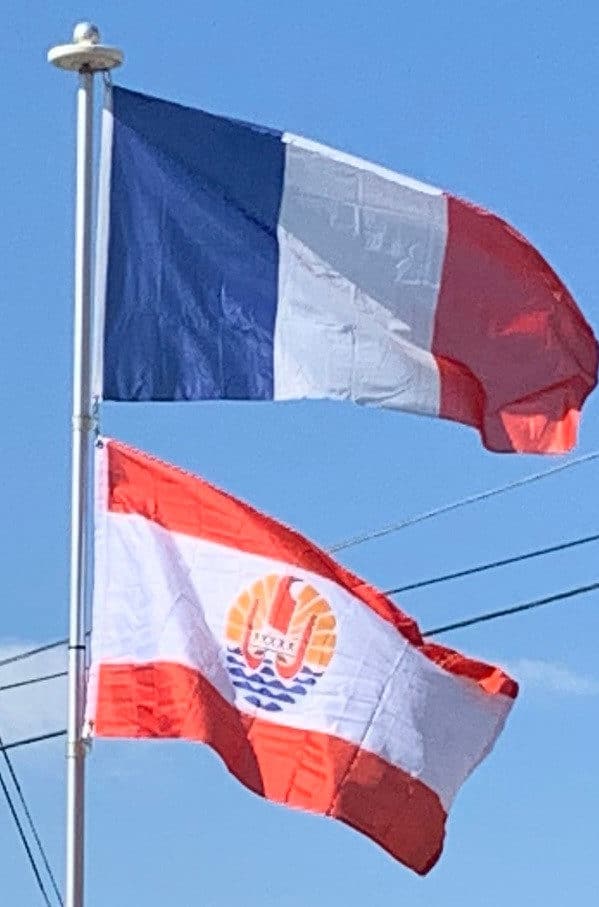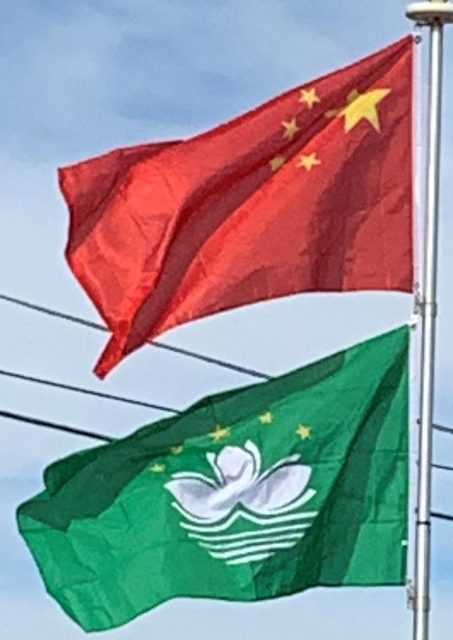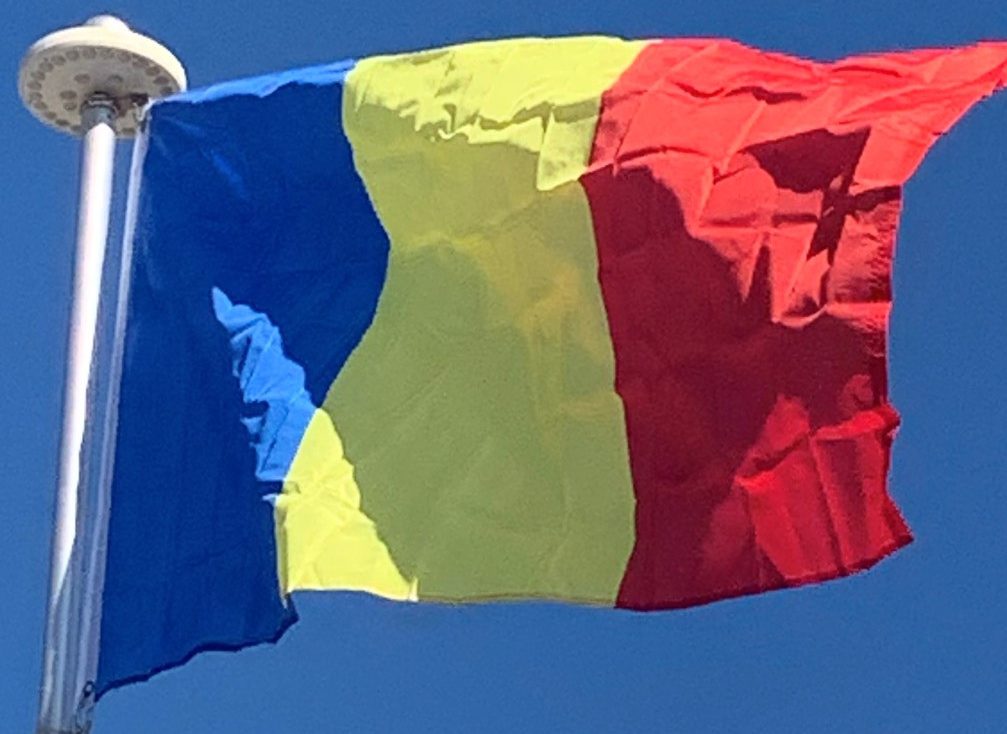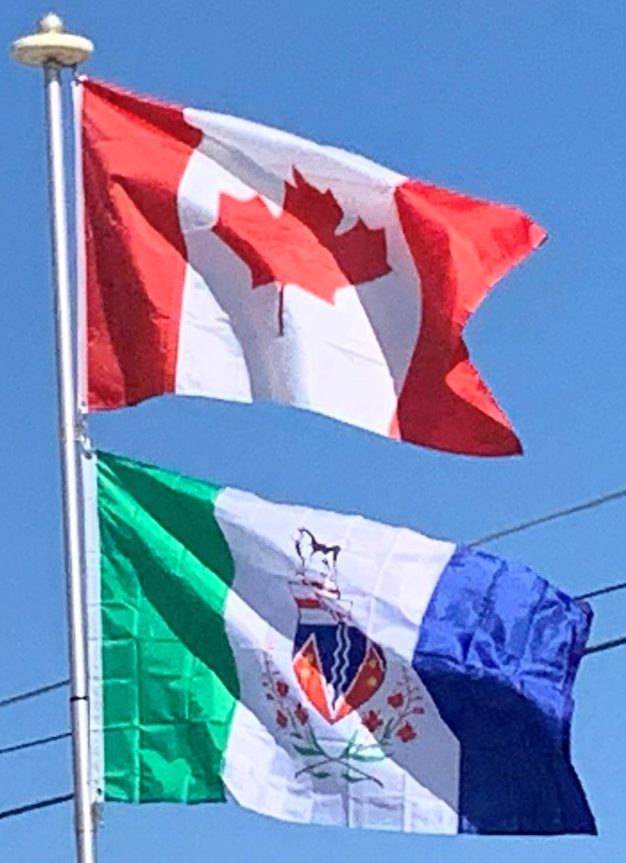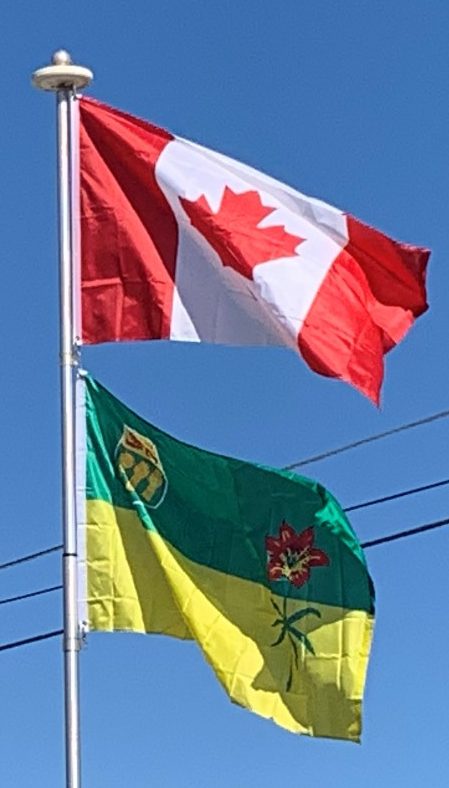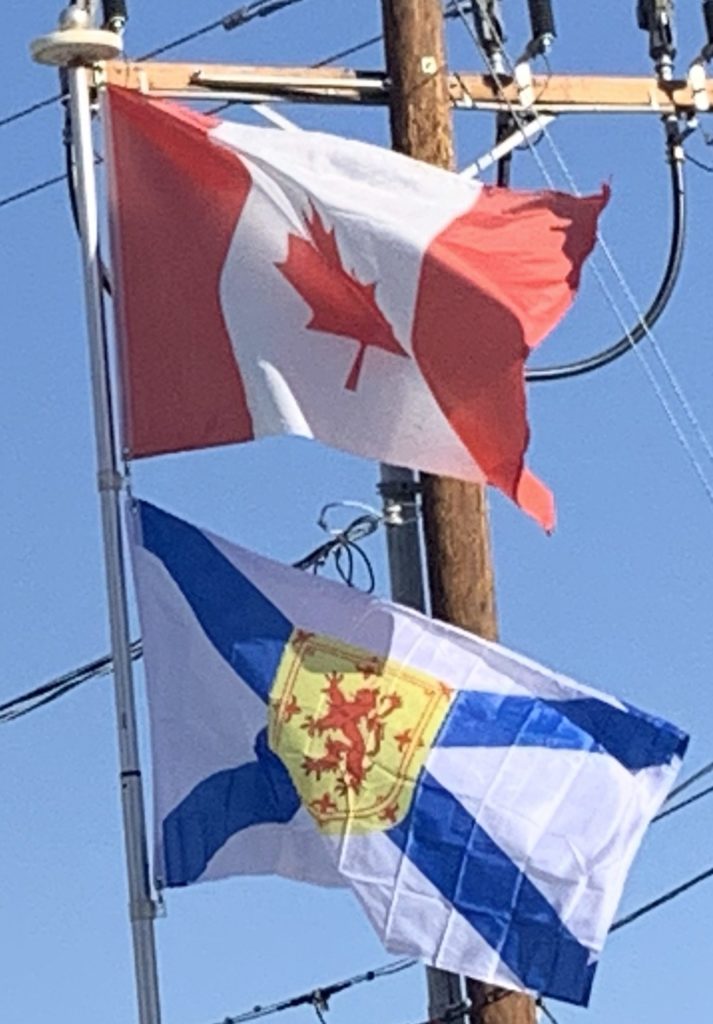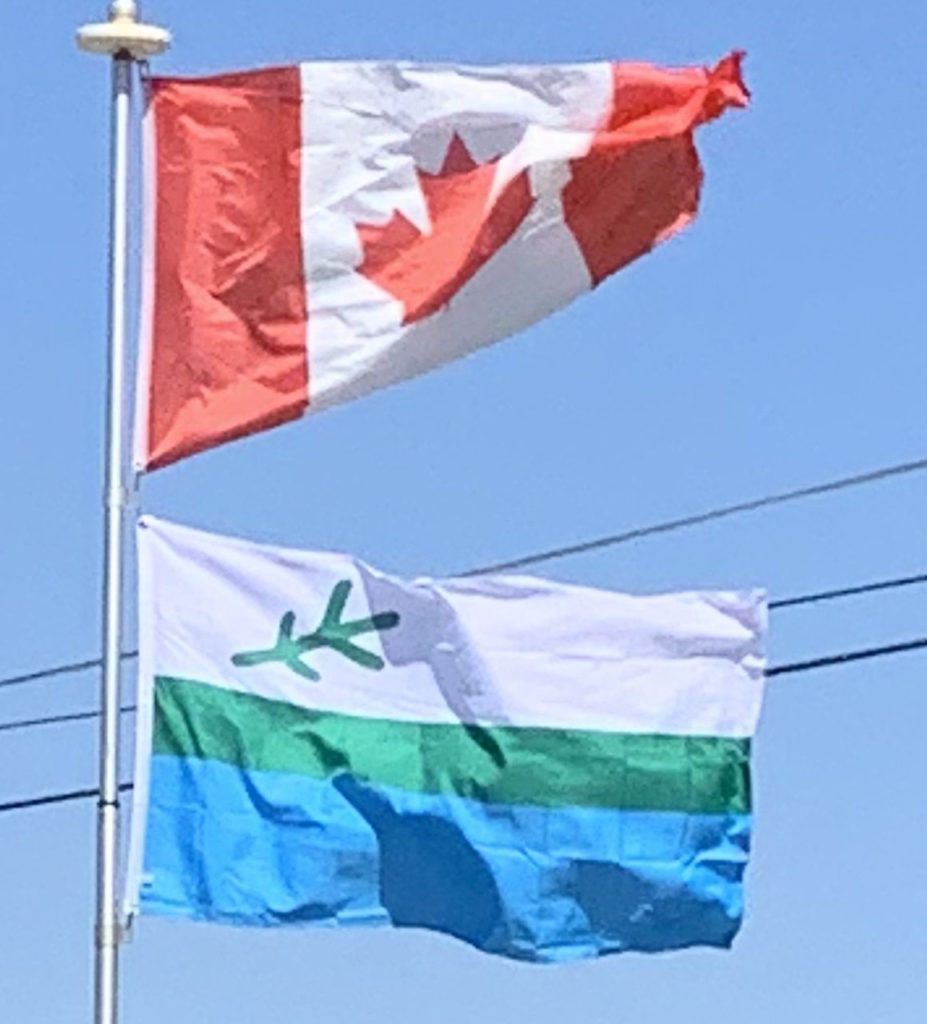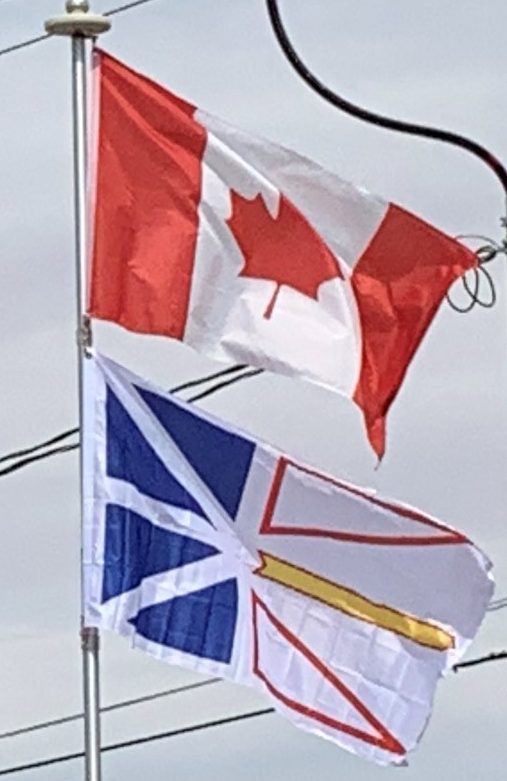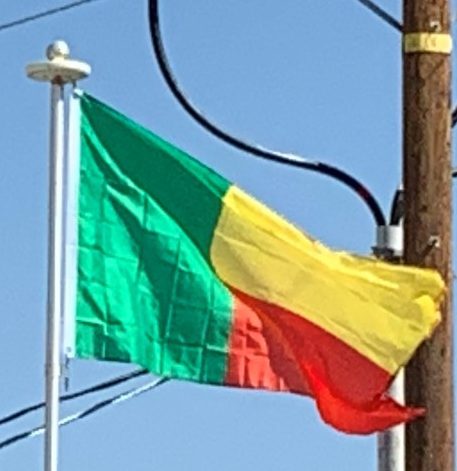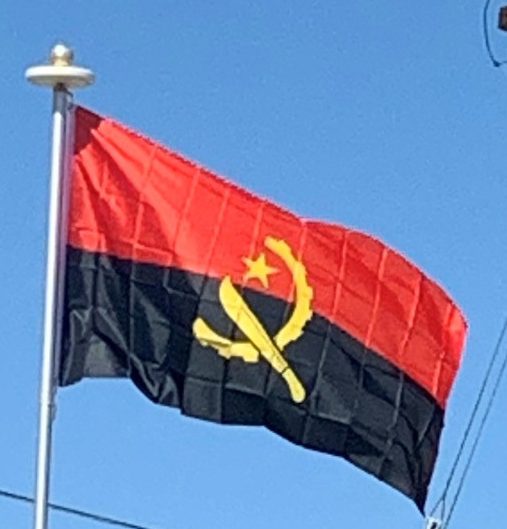French Polynesia
Two red horizontal bands encase a wide white band in a 1:2:1 ratio; centered on the white band is a 0.43m diameter disk with a blue and white wave pattern depicting the sea on the lower half and a gold and white ray pattern depicting the sun on the upper half; a Polynesian canoe rides on the wave pattern; the canoe has a crew of five represented by five stars that symbolize the five island groups; red and white are traditional Polynesian colors.
